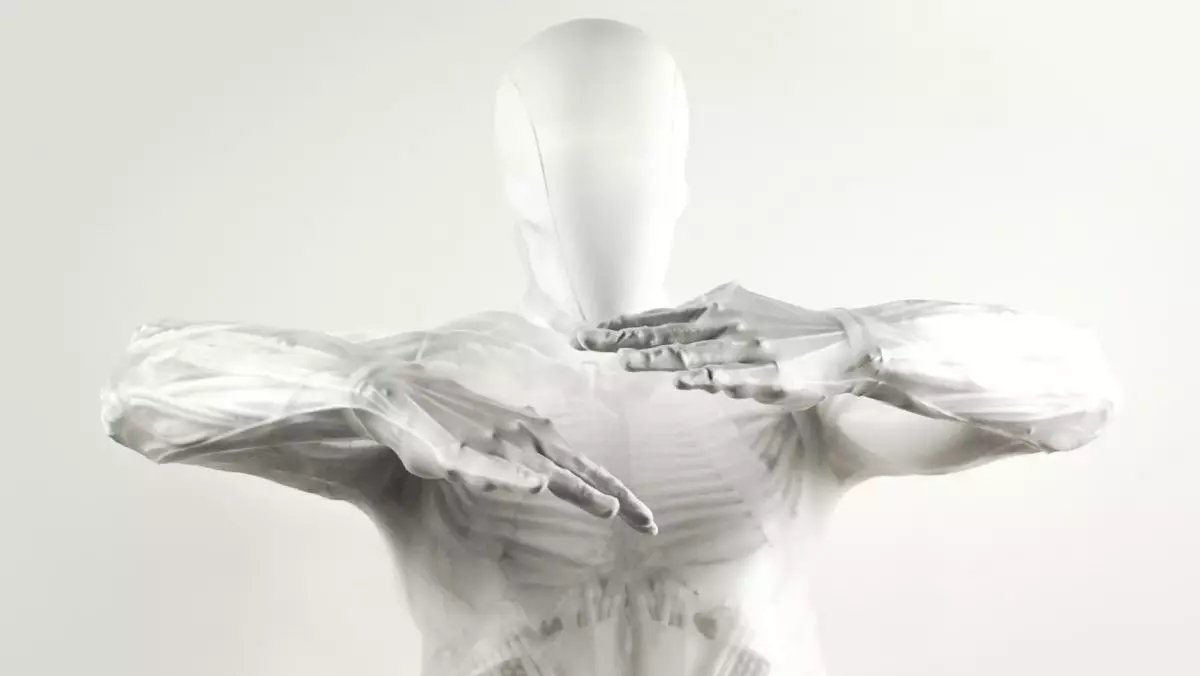The evolution of robotics has taken an ominous turn in recent years, with innovations pushing the boundaries of design and functionality. One particular case stands out: the announcement of the “Protoclone: Bipedal Musculoskeletal Android V1,” a creation from the company Clone. This android claims to blend the familiarity of human anatomy with advanced technological features. However, rather than excitement, its unveiling elicits a chilling sense of disquietude.
What Lies Beneath the Surface?
At a glance, the android presented by Clone is unsettling. Described as a musculoskeletal android, it features a purely anatomical structure reminiscent of human beings—complete with limbs and body parts, yet devoid of a face. This design choice is as alarming as it is ingenious; by eliminating facial features, Clone effectively sidesteps the uncanny valley—a phenomenon where humanoid robots evoke discomfort due to their almost-human appearance. Yet, the absence of a face only amplifies the eeriness of a figure that might, at any moment, begin thrashing in an attempt to escape its constraints.
Although the android’s skeletal structure is an engineering marvel, it’s the thought of a voiceless entity wrestling with its own existence that provokes an unsettling terror. Without a mouth to scream or a face to express anguish, this tragic figure evokes empathy—not pity, but a disturbing kind of empathy that questions the ethics of its existence.
The creators at Clone are proud of their technological advancements, such as the proprietary “Myofiber” technology that animates the android’s musculoskeletal system. This skeletal structure, comprising 206 synthetic bones outfitted with an artificial musculature system, rivals the complexity of a real human body. Such intricate engineering comes with features that are undeniably impressive, complete with depth cameras for vision and a hydraulic system to mimic biological functions. However, these impressive capabilities come at an ethical price.
Why would anyone require an android that emulates a human so closely? While proponents argue it can be designed to safely integrate into households, critics are quick to note the potential risks. Envision a scenario where this android, capable of recognizing its surroundings, learns to navigate your home. The very thought of it stumbling, twitching, or unpredictably collapsing is more than just unsettling—it raises questions about safety and responsibility. Are we prepared for the liability that comes with owning such an unsettling entity?
According to Clone, the android will possess skills designed to impress: memorizing layouts, managing household chores, and even engaging in witty dialogue. These features sound appealing on paper; however, they venture dangerously close to science fiction. The doubt surrounding such capabilities is palpable. Given the android’s tendency toward erratic behavior, one must wonder if it will actually be more of a hazard than a help.
Just imagine the disillusionment when the long-awaited household helper fails to deliver on its promises, instead becoming a source of chaos. A malfunctioning android pouring a drink could turn your elegant gathering into an awkward disaster. It is easy to envision scenarios where this robot’s programming goes awry: spilling its contents all over your expensive furniture or, in a more dystopian turn, accidentally causing physical harm to a loved one.
As we stand on the precipice of this new robotic frontier, the ramifications of integrating such technology into our daily lives remain to be seen. While there are undeniable benefits to advancements in robotics, the ethical implications and potential dangers are worth scrutinizing.
The creation of humanoid robots may usher in a wave of convenience, but the risks of being pitted against a mindless yet aware entity cannot be overlooked. For every promise of convenience, one must question whether we are ready for a future where machines might not only replicate human function but also possess the eerie shadow of human-like consciousness.
While the idea of a musculoskeletal android may sound like a leap into the future, its arrival is more of a cautionary tale than a harbinger of progress. As consumers, we hold the power to dictate the direction of this burgeoning field, and it is incumbent upon us to approach the realm of humanoid robotics with a healthy dose of skepticism and a vigilant eye on our ethical standards.

